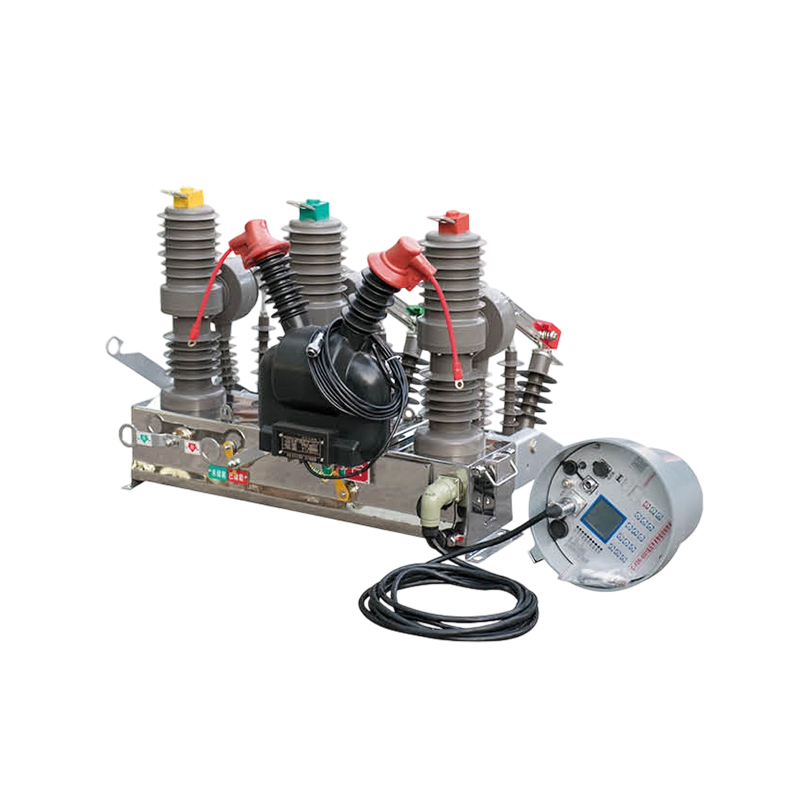Industry News
Typical Applications of Medium Voltage Vacuum Circuit Breakers
Medium Voltage (MV) vacuum circuit breakers are an essential component in electrical power systems, used to protect and control medium voltage circuits. These breakers operate by interrupting the flow of electrical current during abnormal conditions such as short circuits or overloads, helping to prevent equipment damage and maintain system stability.
A medium voltage vacuum circuit breaker is a switching device designed to operate within voltage levels typically ranging from 1 kV up to 38 kV. The term “vacuum” refers to the method of arc extinction inside the breaker contacts. When the breaker opens, the electrical arc that forms between the contacts is extinguished in a vacuum chamber, which has good insulating properties.
The vacuum environment rapidly suppresses the arc, enabling the breaker to interrupt current flow quickly and safely. This arc quenching technique offers several advantages in terms of reliability, maintenance, and environmental safety compared to other interruption methods.
The main parts of an MV vacuum circuit breaker include the vacuum interrupter, operating mechanism, contact assembly, and insulating housing.
Vacuum Interrupter: The heart of the breaker, it consists of a sealed vacuum container with two contacts inside. These contacts separate to break the circuit and extinguish the arc within the vacuum.
Operating Mechanism: This mechanical system opens or closes the contacts, either manually or through automatic control.
Contact Assembly: Conducts current during normal operation and separates during interruption.
Insulating Housing: Surrounds the interrupter and mechanical parts, providing insulation and protection.
When a fault or abnormal condition is detected, the breaker’s mechanism triggers the separation of contacts inside the vacuum interrupter. The vacuum environment prevents the formation of a sustained arc, allowing the circuit to open safely.
Medium voltage vacuum circuit breakers have several operational advantages. They typically require less maintenance because the vacuum interrupter is sealed and protected from contaminants. The absence of gas or oil in the interruption process reduces environmental concerns and eliminates the need for frequent gas checks or oil replacement.
The rapid arc extinguishing capability results in shorter interruption times, which helps reduce stress on the electrical system and connected equipment. These breakers are also known for stable performance under various electrical loads and can operate reliably in different environmental conditions.
MV vacuum circuit breakers are commonly used in power distribution systems for industrial plants, commercial buildings, and utility substations. They protect transformers, motors, generators, and other critical electrical equipment from damage caused by electrical faults.
These breakers are suitable for both indoor and outdoor installations and can be integrated into metal-enclosed switchgear or ring main units. Their compact size and ease of operation make them a practical choice for medium voltage applications.
Installation of an MV vacuum circuit breaker requires careful consideration of the electrical system design and safety standards. Proper grounding, insulation, and clearances are essential to ensure safe operation.
Maintenance needs for vacuum circuit breakers are generally lower than for other types of breakers. Periodic inspection typically focuses on mechanical operation, contact condition, and verification of the vacuum interrupter's integrity. The sealed nature of the interrupter means it rarely requires replacement, contributing to reduced maintenance costs.
Medium voltage vacuum circuit breakers offer a reliable and efficient solution for interrupting electrical faults in medium voltage networks. Their vacuum-based arc extinction method, combined with durable construction and low maintenance requirements, makes them a valuable component in modern electrical distribution systems.

Next
How Semi-Transparent PV Panels Combine Light and Energy
<p><a href="/" target="_blank">Semi-transparent photovoltaic (PV) pa...
View More- PRODUCTS
- New Energy Power Distribution Equipment
- Box Type Substation
- Cable Branch Box/Switch Station
- High Voltage Switchgear
- Low Voltage Switchgear
- Engineering Vacuum Circuit Breaker
- New Energy Vehicle Floor Charging Pile
- Commercial Energy Storage
- Photovoltaic Complete Box
- High Voltage Arrester
- INFORMATION
-
-
Phone+86-13868788848
+86-13356188725 -
Tel+86-0577-88810567
-
E-mail
-
AddNo. 59, Youyi Road, Xinguang Industrial Zone, Liushi Town, Yueqing City, Zhejiang, China
-
- ENQUIRE WITH US
Photovoltaic Module Manufacturer




 English
English  中文简体
中文简体  русский
русский  Español
Español  عربى
عربى 


